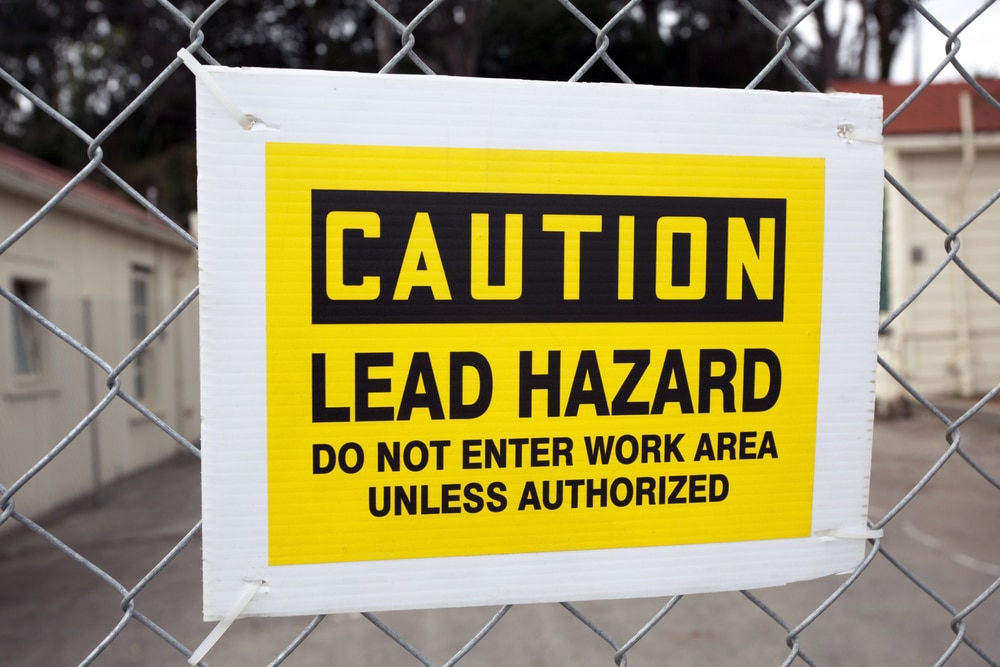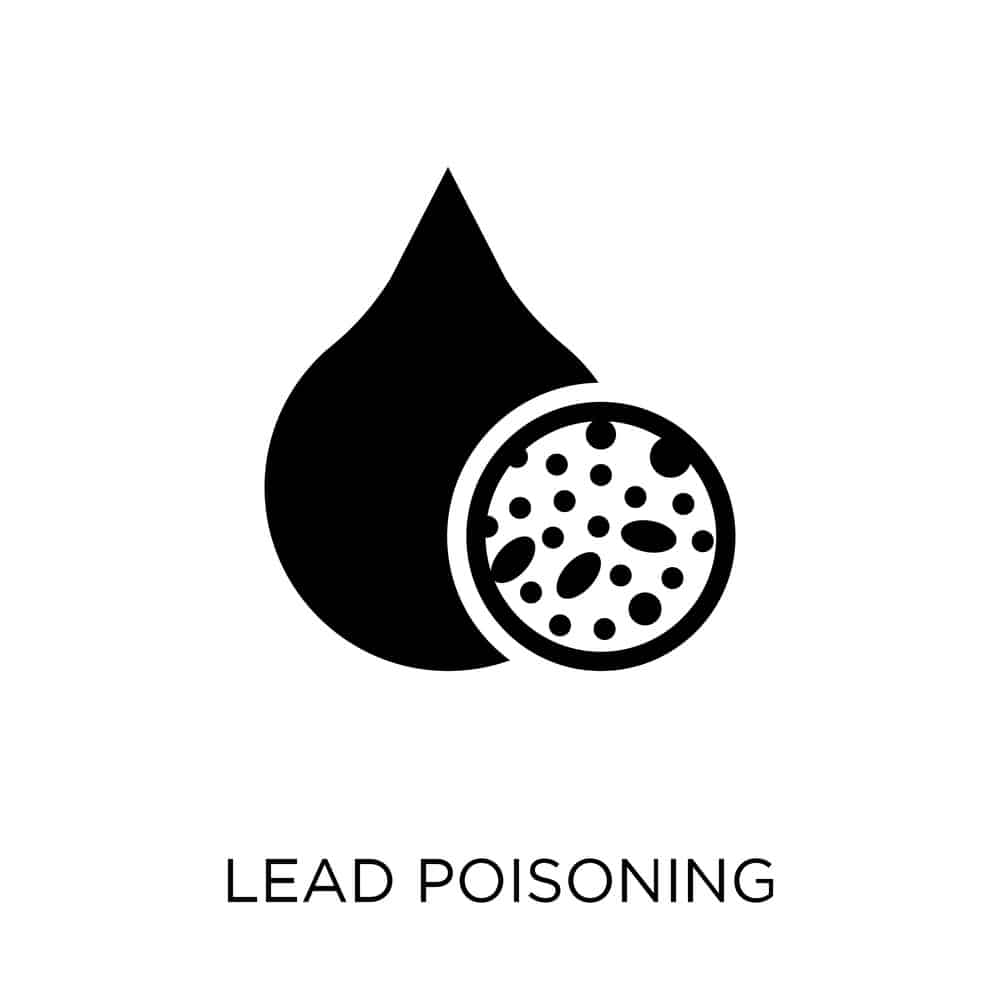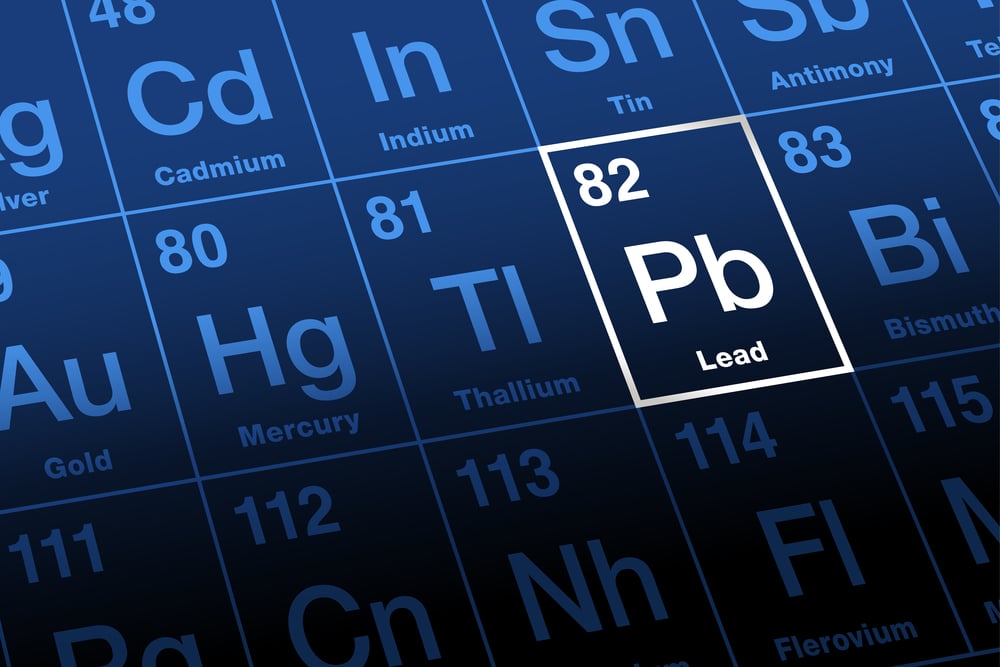Health Risks of Lead Exposure at Work

Prolonged exposure to lead is associated with serious health problems, including both temporary irritating symptoms and long-term harm to vital organs that can impair functions necessary for survival. Because of this, public health professionals recommend taking certain precautions to reduce contact with this substance and avoid the negative health effects of lead exposure.
However, if you work in a profession that requires you to be in contact with the metal on a regular basis, this may be easier said than done. Read on to learn which professions are at risk, what lead poisoning means for your health, and how to prevent workplace lead exposure. In addition to this information, we also offer a lead awareness training for employees video.
What Jobs Are Associated with a High Risk of Lead Exposure?
Workers in many professions have an increased risk of human exposure to lead, but the professionals who work in lead industries have the greatest risk. Industries in which workers come into contact with high levels of the metal include plumbing, due to the use of lead pipes, metalworking, because of contact with lead-contaminated dust, as well as agriculture due to the presence of lead-contaminated soil in the earth’s crust.
Manufacturers of products that contain the substance, such as lead solder and other construction materials, and household implements like lead crystal glassware as well as stained glass, should also take extreme caution. Professionals in the petroleum industry must be aware of the hazards associated with leaded gasoline.
Finally, anyone performing home renovations or repairing old furniture must be on high alert. Peeling paint in the renovation environment may use metal, and antique furniture is increasingly likely to contain this harmful substance. Being able to identify lead risks in the workplace is an important task.

What are the Dangers of Lead in the Workplace?
It’s easy to understand how swallowing leaden paint chips can result in negative health effects. But that’s not the real reason people who work with this substance suffer from lead poisoning at higher rates than others. Read on below to learn how workers are commonly exposed to lead in realistic scenarios.
Lead Dust
Dust is a common hazard in working environments where this material is cut, sawed, or manipulated. Lead particles created by friction are thrown into the air during routine working practices, which can easily become dangerous if the right precautions are not taken.
Without the proper face covering, these particles can be inhaled into the lungs, where they have a high chance of being absorbed by the body. They can also be swallowed if workers neglect to wash their hands appropriately.
Lead Fumes
Fumes are a serious hazard to watch out for in blacksmithing and other metalworking professions, where the metal must be heated to a high temperature to manipulate and mold into new shapes. These fumes contain high metal levels and can easily cause poisoning if workers do not protect themselves with the recommended safety gear.
Never work with the substance at high temperatures without the proper protective equipment required by OSHA, and always be wary of being exposed to lead in gaseous forms in environments where this work is taking place.

How Does Lead Poisoning Affect the Human Body?
Being habitually exposed to toxic substances in the workplace can result in a myriad of serious health problems, ranging from minor symptoms to permanent damage to vital organ systems in cases of severe lead poisoning. See below for a breakdown of the particular negative health consequences for each specific organ system that can be caused by inadvertently ingesting the substance.
Brain and Nervous System
When the substance enters the nervous system via the bloodstream, it can decrease the patient’s brain function.
Blood
Blood carries this harmful substance to other parts of the body, but its presence in the bloodstream can also have disastrous consequences for the circulatory system.
Kidneys
Kidney damage has been documented to occur due to overexposure in certain working environments.
Fertility
Pregnant women must take extreme caution to avoid products containing this metal, as exposure can harm the unborn child. The developing fetus is likely to suffer adverse health consequences due to the mother’s involuntary ingestion of this substance, and there is an associated risk of premature birth.

The Risks for Children
Adult workers in certain industries aren’t the only people with a risk of lead poisoning. Children must be monitored for this as well. According to the Centers for Disease Control, no amount is safe for children to have in their bloodstream, so they must undergo regular blood lead testing to be safe.
Young children are primarily exposed to this substance in the form of lead paint. Lead-based paint is still found in many older buildings, and children can easily ingest it by accident. As children are known for putting their hands in their mouths without washing them, it’s easy for them to swallow small chips of paint inadvertently.
Children are also at risk for breathing in particles of this substance if the paint on their walls is agitated in some way. Older children with more agency may come into contact with the substance outside of the home environment as well, such as in unsafe public drinking water. Be sure to educate your children about safe behavior and have their blood lead levels tested regularly.
What are the Symptoms of Working with Lead?
Obvious symptoms are not always present in cases of excessive exposure to this substance. Even if no weird feelings are detected, ingestion’s negative effects may still be beneath the surface.
However, when symptoms do occur, they are most commonly high blood pressure, anxiety, tasting metal, abdominal pain, sleeping difficulties, fatigue, joint pain, constipation, and problems with fertility.
What are the OSHA Requirements for Lead Exposure?
The Occupational Safety and Health Administration obligates employers in certain industries in the United States to meticulously monitor and regulate the levels of this substance in their workspaces. Employers are not allowed to require employees to work in environments that exceed the permissible exposure level per cubic meter for contamination.
Additionally, OSHA recommends a set of best practices for reducing contact with this substance in the workplace, such as wearing protective clothing and ensuring that each employee’s blood lead level is monitored. OSHA even protects workers with high levels of exposure against medical dismissal.
For regulations in other countries, please refer to the literature of the appropriate regulatory body.

Avoiding Lead in the Workplace
A few easy steps can be taken to reduce exposure when working with leaden materials. Lead stored in the workplace should always be located in an area with local exhaust ventilation. Wet cleaning methods should be used to clean areas with dust that may contain the metal.
Work clothes that may be contaminated should be kept in a locker on the premises, and workers should shower thoroughly and change completely before returning home.
Treating Lead Poisoning
An at-risk worker must have the levels of the substance present in their body monitored regularly. Lead circulates via the bloodstream and moves about the body to affect other organs, so the more lead is present, the greater the risk for serious health consequences.
A simple blood test can measure the blood lead level. Patients can be treated with chelation, which uses substances like calcium disodium versenate to reduce lead levels if elevated levels are found.
Stay Informed to Reduce Your Exposure to Lead in the Work Environment
Lead exposure has been a prominent public health nightmare for many years. But the more you know about its dangers and how to avoid it, the more prepared you can be to protect your health in any professional environment. Be sure to follow the OSHA guidelines any time you work with this harmful substance to prioritize your health and well-being in the workplace.